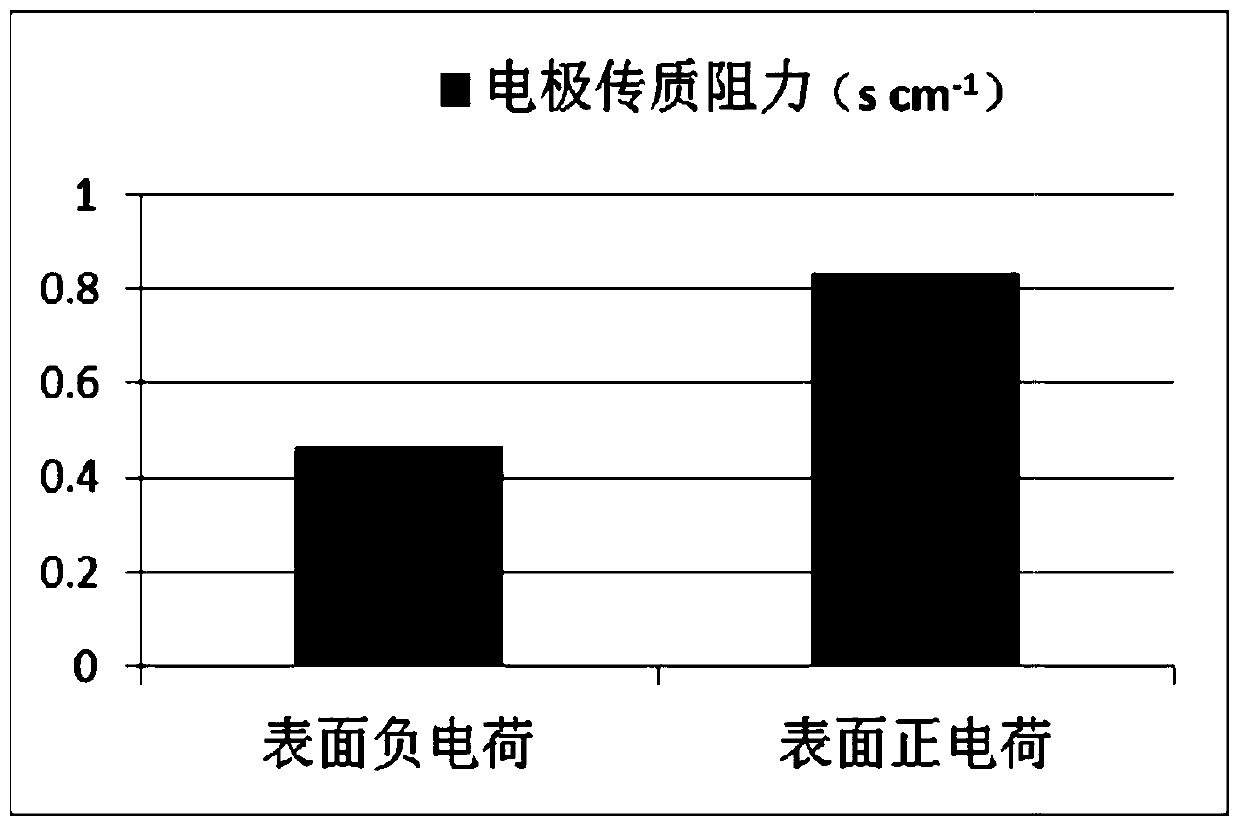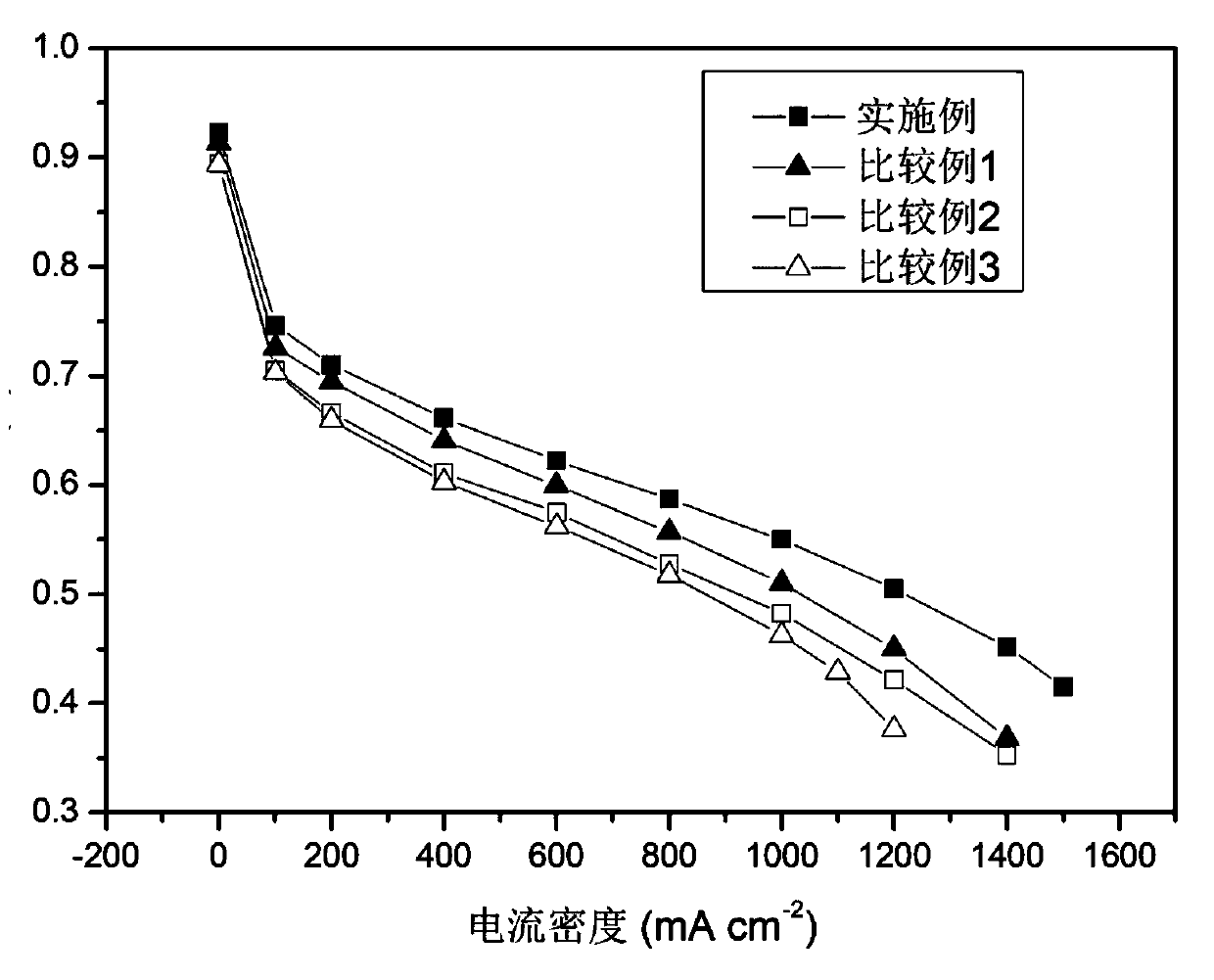Film electrode with ultralow oxygen mass transfer resistance
A mass transfer resistance and membrane electrode technology, applied in battery electrodes, circuits, fuel cells, etc., can solve problems affecting the mass transfer resistance of the catalytic layer, battery mass transfer polarization loss, etc., to achieve optimal Nafion distribution, reasonable Nafion distribution, The effect of reducing mass transfer resistance
- Summary
- Abstract
- Description
- Claims
- Application Information
AI Technical Summary
Problems solved by technology
Method used
Image
Examples
Example Embodiment
[0034] 1. Preparation of materials. Mix XC-72 type carbon with concentrated sulfuric acid (mass ratio is 1:3), react at 180℃ for 24h, and load negative charge to obtain negative charge modified carbon carrier. Disperse 2 g of negatively charged modified carbon carrier in 200 ml of aqueous solution and dissolve 2.5 g of chloroplatinic acid hexahydrate. After 30 minutes of ultrasound, add 0.5 mol L dropwise -1 A total of 6 ml of sodium borohydride solution is reduced to platinum nanoparticles to obtain a negatively charged platinum-carbon catalyst.
[0035] 2. Preparation of membrane electrode. Add 0.062g of negatively charged platinum carbon catalyst and 0.15g of 20% concentration of commercial ionic resin Nafion solution to 15ml of isopropanol and water mixed solvent (volume ratio 3:1), and further add 0.031g of negatively charged modification The carbon support, the mixed slurry was ball milled for 24 hours, and then sprayed on the proton membrane as the cathode.
[0036] The a...
Example
[0040] Examples 1~3
[0041] In order to optimize the amount of negatively charged carbon carriers, the present invention adopts three examples. Examples 1, 2, and 3 correspond to the doped negatively charged modified carbon carrier and the negatively charged platinum-carbon catalyst (the platinum loading of the catalyst is about 50 %) mass ratios are 0.3:1, 0.5:1, 0.6:1, respectively.
Example
[0042] Comparative examples 1 to 3
[0043] Since conventional commercial catalysts generally use carbon carriers such as XC-72, KJ-600, etc., as carbon carriers, the surfaces are all positively charged. In the comparative example of the present invention, a positively charged commercial XC-72 is used to make a catalyst and a membrane electrode. That is, in the comparative example, the surface of the catalyst carbon support or the additionally doped carbon support is positively charged. The preparation method of Comparative Examples 1 to 3 is the same as that of Example 2, and the difference lies in that the carbon support and / or doped carbon support of the platinum carbon catalyst used in Comparative Examples 1 to 3 is different from that of Example 2. There are three specific comparative examples:
[0044] 1. The carbon support of the platinum-carbon catalyst in Comparative Example 1 is modified with negative charges (same as Example 2), and the doped carbon support is commer...
PUM
 Login to view more
Login to view more Abstract
Description
Claims
Application Information
 Login to view more
Login to view more - R&D Engineer
- R&D Manager
- IP Professional
- Industry Leading Data Capabilities
- Powerful AI technology
- Patent DNA Extraction
Browse by: Latest US Patents, China's latest patents, Technical Efficacy Thesaurus, Application Domain, Technology Topic.
© 2024 PatSnap. All rights reserved.Legal|Privacy policy|Modern Slavery Act Transparency Statement|Sitemap



